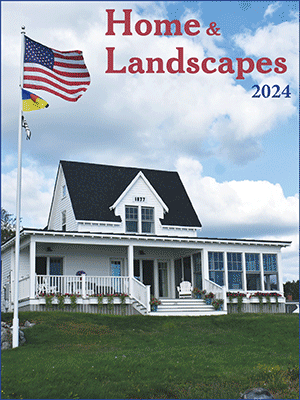Bristol Marine launches Boston Tea Party replica ship
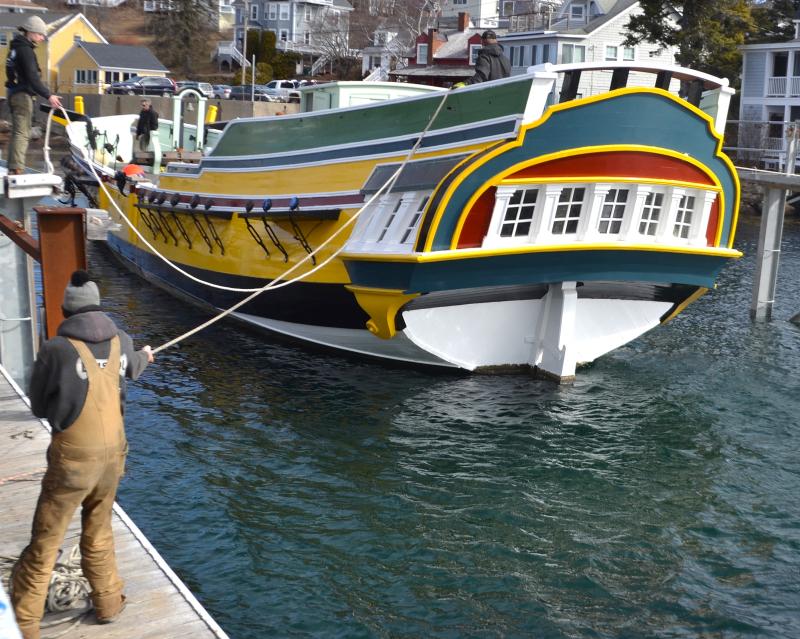 The Eleanor launches March 13 at Bristol Marine in Boothbay Harbor. FRITZ FREUDENBERGER/Boothbay Register
The Eleanor launches March 13 at Bristol Marine in Boothbay Harbor. FRITZ FREUDENBERGER/Boothbay Register
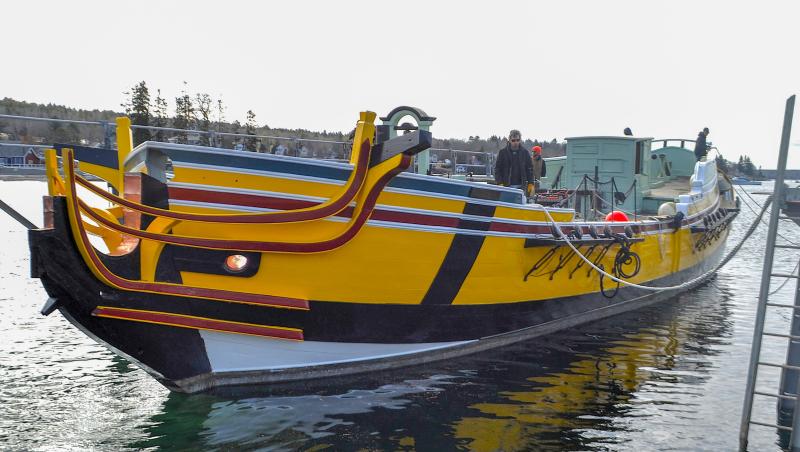 The Eleanor at the March 13 launch. FRITZ FREUDENBERGER/Boothbay Register
The Eleanor at the March 13 launch. FRITZ FREUDENBERGER/Boothbay Register
 Carpenter Tom Gerhard gives a tour of the Eleanor as part of an event co-hosted by Bristol Shipyard and Boothbay Region Historical Society. FRITZ FREUDENBERGER/Boothbay Register
Carpenter Tom Gerhard gives a tour of the Eleanor as part of an event co-hosted by Bristol Shipyard and Boothbay Region Historical Society. FRITZ FREUDENBERGER/Boothbay Register
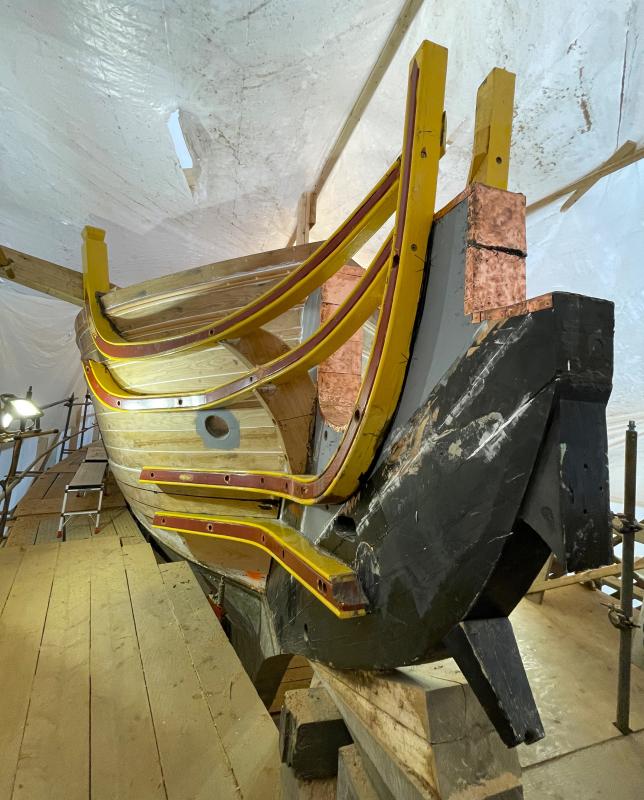 The Eleanor's bow. FRITZ FREUDENBERGER/Boothbay Register
The Eleanor's bow. FRITZ FREUDENBERGER/Boothbay Register
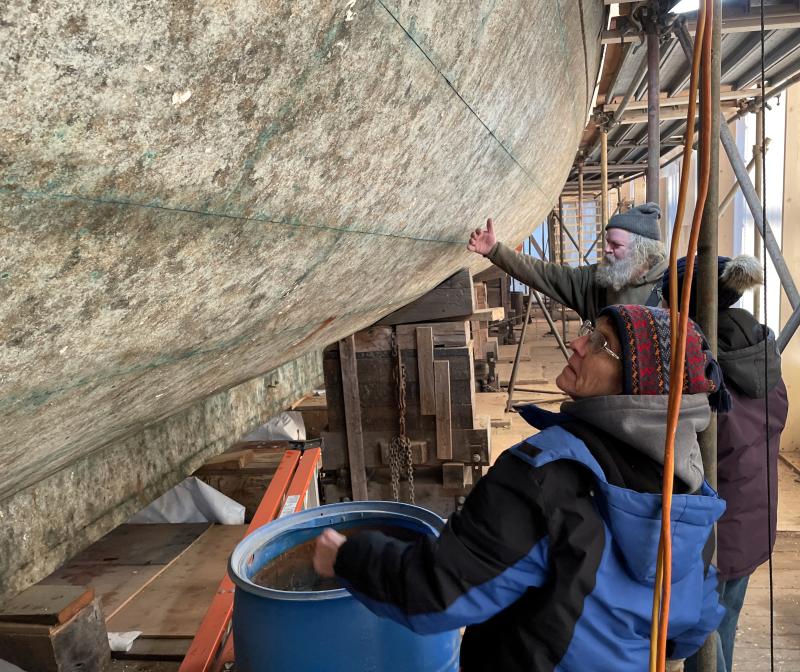 The copper-clad hull of the Eleanor. FRITZ FREUDENBERGER/Boothbay Register
The copper-clad hull of the Eleanor. FRITZ FREUDENBERGER/Boothbay Register
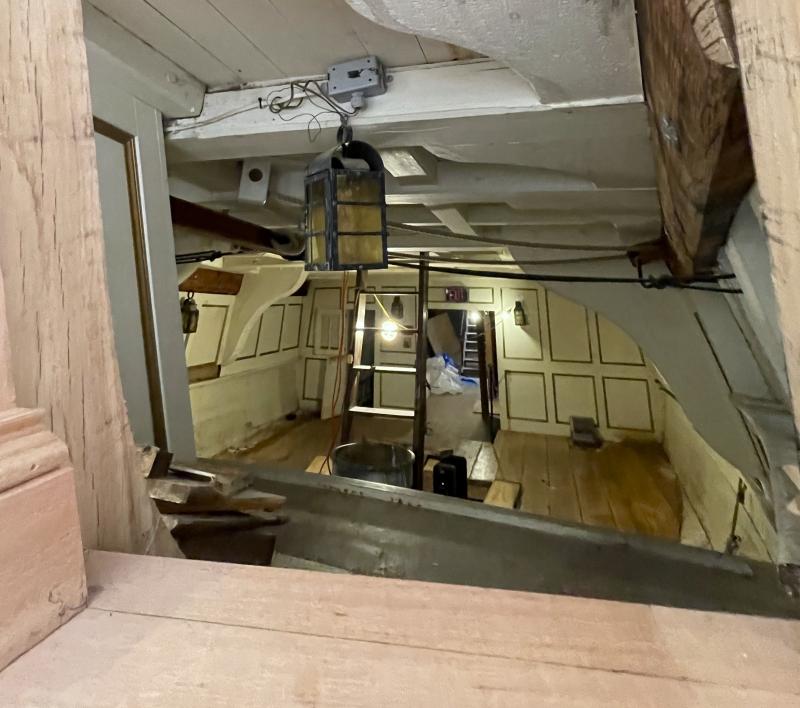 A peek inside the Eleanor. FRITZ FREUDENBERGER/Boothbay Register
A peek inside the Eleanor. FRITZ FREUDENBERGER/Boothbay Register
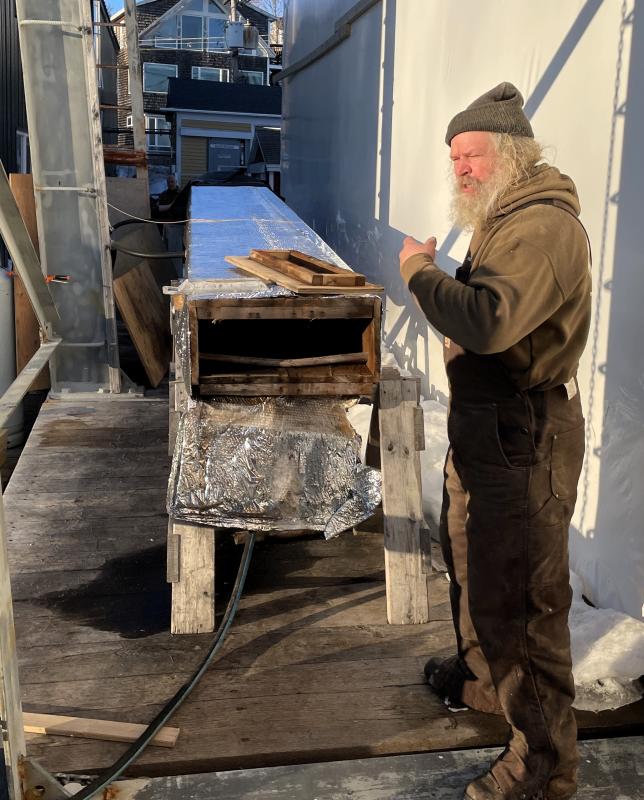 Tom Gerhard shows off a steam box used to make wooden planking pliable enough to put on the ship. FRITZ FREUDENBERGER/Boothbay Register
Tom Gerhard shows off a steam box used to make wooden planking pliable enough to put on the ship. FRITZ FREUDENBERGER/Boothbay Register
 FRITZ FREUDENBERGER/Boothbay Register
FRITZ FREUDENBERGER/Boothbay Register
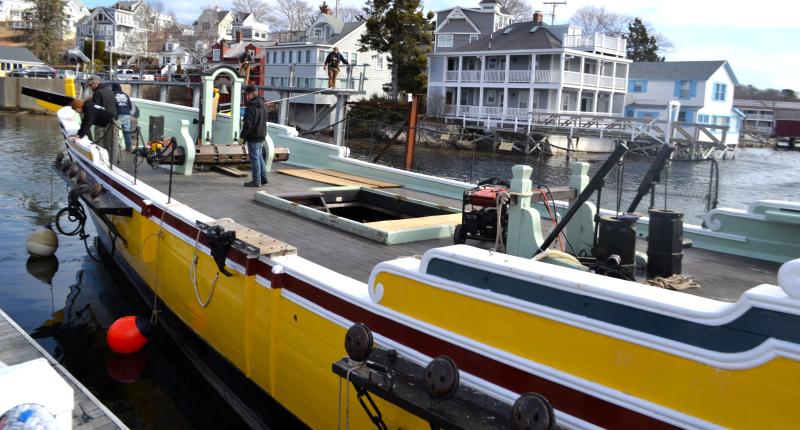 The Eleanor at the March 13 launch. FRITZ FREUDENBERGER/Boothbay Register
The Eleanor at the March 13 launch. FRITZ FREUDENBERGER/Boothbay Register
 The Eleanor at the March 13 launch. FRITZ FREUDENBERGER/Boothbay Register
The Eleanor at the March 13 launch. FRITZ FREUDENBERGER/Boothbay Register
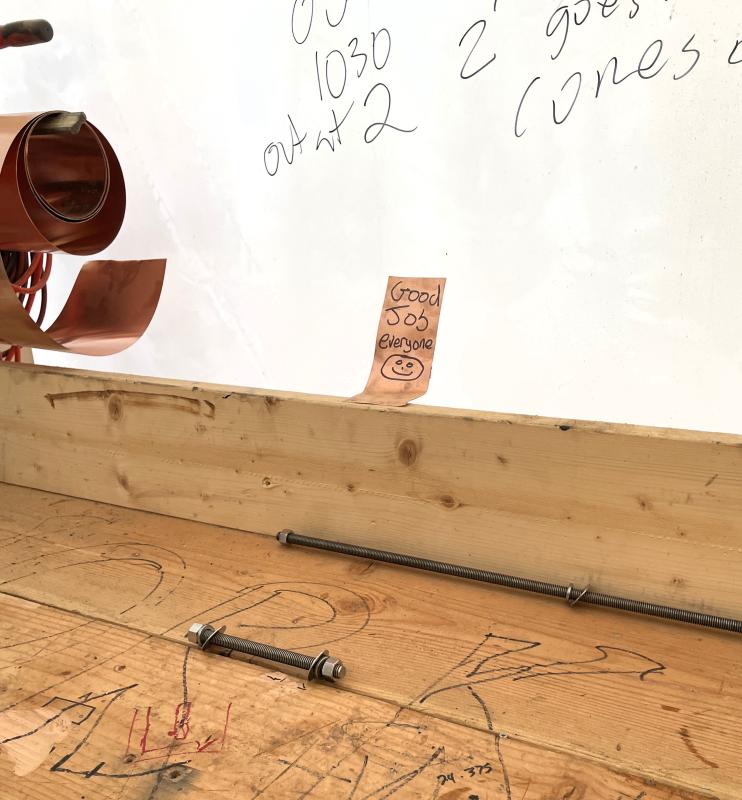 Words of encouragement at the shipyard. FRITZ FREUDENBERGER/Boothbay Register
Words of encouragement at the shipyard. FRITZ FREUDENBERGER/Boothbay Register
 The Eleanor launches March 13 at Bristol Marine in Boothbay Harbor. FRITZ FREUDENBERGER/Boothbay Register
The Eleanor launches March 13 at Bristol Marine in Boothbay Harbor. FRITZ FREUDENBERGER/Boothbay Register
 The Eleanor at the March 13 launch. FRITZ FREUDENBERGER/Boothbay Register
The Eleanor at the March 13 launch. FRITZ FREUDENBERGER/Boothbay Register
 Carpenter Tom Gerhard gives a tour of the Eleanor as part of an event co-hosted by Bristol Shipyard and Boothbay Region Historical Society. FRITZ FREUDENBERGER/Boothbay Register
Carpenter Tom Gerhard gives a tour of the Eleanor as part of an event co-hosted by Bristol Shipyard and Boothbay Region Historical Society. FRITZ FREUDENBERGER/Boothbay Register
 The Eleanor's bow. FRITZ FREUDENBERGER/Boothbay Register
The Eleanor's bow. FRITZ FREUDENBERGER/Boothbay Register
 The copper-clad hull of the Eleanor. FRITZ FREUDENBERGER/Boothbay Register
The copper-clad hull of the Eleanor. FRITZ FREUDENBERGER/Boothbay Register
 A peek inside the Eleanor. FRITZ FREUDENBERGER/Boothbay Register
A peek inside the Eleanor. FRITZ FREUDENBERGER/Boothbay Register
 Tom Gerhard shows off a steam box used to make wooden planking pliable enough to put on the ship. FRITZ FREUDENBERGER/Boothbay Register
Tom Gerhard shows off a steam box used to make wooden planking pliable enough to put on the ship. FRITZ FREUDENBERGER/Boothbay Register
 FRITZ FREUDENBERGER/Boothbay Register
FRITZ FREUDENBERGER/Boothbay Register
 The Eleanor at the March 13 launch. FRITZ FREUDENBERGER/Boothbay Register
The Eleanor at the March 13 launch. FRITZ FREUDENBERGER/Boothbay Register
 The Eleanor at the March 13 launch. FRITZ FREUDENBERGER/Boothbay Register
The Eleanor at the March 13 launch. FRITZ FREUDENBERGER/Boothbay Register
 Words of encouragement at the shipyard. FRITZ FREUDENBERGER/Boothbay Register
Words of encouragement at the shipyard. FRITZ FREUDENBERGER/Boothbay Register
A recipe for revolution (circa 1773): chilled saltwater, 92,000 pounds of tea. Mix.
December 16, 1773, members of the Sons of Liberty boarded ships carrying British East India Company cargo. Over the course of three hours, the group smashed 340 chests of tea, dumping their contents into the frigid waters of Boston Harbor to protest trade restrictions. “Perhaps salt water and tea will mix tonight!” smuggler and trader John Rowe was famously quoted.
According to the Boston Tea Party Ship Museum, Rowe was so angry at British policy, he helped incite the destruction of 114 crates of his own cargo aboard his ship, the Eleanor. The private museum now owns a replica of the ship and uses it as part of its dockside exhibits. Three ships were part of the historical event, and the museum also owns a replica of the Beaver. No version of theDartmouth exists.
However, the Eleanor was in need of work. Around a year ago, Bristol Marine in Boothbay Harbor was tasked with its repair. It arrived in Boothbay Harbor in 2024 after a tugboat took her on a 17-hour journey from Boston. They launched it back into the water March 13.
The week prior, Boothbay Region Historical Society co-hosted an event with Bristol Shipyard, attended by over 50 people. They shared some of the ship's history and the work that went into it. Bristol Marine shipwright Ross Branch talked about the repairs on the 14-week project that took around 7,000 hours of labor.
According to the museum, no original plans exist for the Eleanor, but shipping papers referred to it as “ship rigged” and a “constant trader.” The museum said the replica is, instead, based on colonial merchant vessels of the period which fit her description. One ship in particular, the London, carried part of the same shipment of tea to Charleston, South Carolina. As the London was later sold to the Royal Navy, line drawings were recorded and preserved which helped create plans for the replica.
Branch said the base ship was a 1936 dragger out of Thomaston, retrofitted by Gloucester Marine Railways to replicate the original. However, when it was built, they didn't add ventilation, so rot took hold over time. According to Branch, some of the planking could be removed just by grabbing it and pulling it off by hand. “Boston gets hot, it's damp, and so all you need is just continued dampness and heat, and you have rot very quickly,” he said.
Branch added that when he visited the ship in Boston, she looked intact, but “when she got up here, after being towed from Boston, she was not. She had several holes in the bow from water punching holes in through the boat. So, she had significant rot issues.”
To ventilate the ship, Bristol Marine workers added gaps to create a chimney effect. They also reengineered the windows to better drain and coated the boat with borate, an antifungal agent that can mitigate the spread of spores.
“That's the problem with boats. You take this nice wooden structure, and you put it in the water. There's a problem there,” said carpenter Tom Gerhard, who worked on the ship. “The good thing ... It's way better for boats to be in the seawater. Freshwater is what wrecks boats. Seawater has salt. What do you preserve ham with? Salt. So, it's the fresh water that drains on the boat, then drips in and gets between things.”
The restoration project also included fresh paint, rebuilding the transom and stem, adding new double-sawn frames and planking. They ended up replacing much of the wood above the water line, including with around $100,000 worth of Danish oak from the same stock as their previous project on the Ernestina-Morrissey. To do that, they made the wood pliable with a large box steamer, soaking the wood in hot vapor for hours before it was pliable enough to bend into position with the aid of clamps and jack stands for leverage.
Shipwrights said they didn’t tackle issues below the water line due to the timeline and terms of the contract. Fortunately, shipwrights said the copper-clad hull was in good shape and should be fine when towed back to Boston.























































